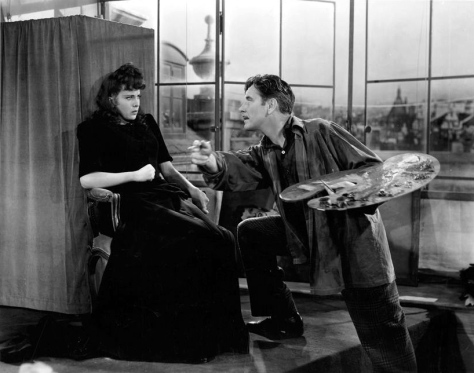After hearing this blog’s co-author mention that Kipling’s The Light That Failed kept Kipling off his list of top ten novelists, I decided to read the novel myself. (Thompdjames still writes on the blogosphere, but he has been very busy writing his thesis. Check out his latest post here.) Rather than an inferior work, the novel proved to be engrossing; though, I will confess that whether or not this novel interests one might depend on one’s present circumstances, ability to tolerate stories featuring great mental suffering, and identification with the protagonist. Dick, the protagonist, is a very headstrong and prideful young man, which qualities count as his tragic flaws. Another flaw one might find with the work is that the plot mostly covers the interior thoughts of the characters and their conversation rather than their actions. Most of the work takes place in a single apartment.
Of the characters, Dick and his close friend Torpenhow stand as the most interesting. The latter acts as a restraint upon Dick’s excesses and tries to lead him to undertaking a more productive lifestyle, especially after he sees a drop in Dick’s output of paintings. Interestingly, Dick’s stubbornness often makes Dick a better influence on Torpenhow–due to the latter’s greater docility–than Torpenhow is able to be for Dick!
The novel opens with Dick conversing with his childhood friend, Maisie. Both live in the same orphanage. Yet, the opening chapter takes us from adolescence to Dick’s time as a correspondent in a military campaign. The campaign ends, and Dick and Torpenhow return to London with Dick having the intention of painting military scenes. His entrance into London shows the reader that Dick concerns himself with the appearances of things too much. For about one month, he lives by himself on bangers and mash for three square meals a day because he refuses to take out more money from the bank. You see, he wants to show London and the bank that he’s well off. I doubt anyone noticed besides himself! When he finally moves into Torpenhow’s apartments, his friend chides him for not coming to see him sooner.

There exists a movie about the book. I wonder whether it can portray Dick’s interior state as well as the book.
His preference for accidents over essence extends even to his work, as he paints the kind of pictures the public wants to buy rather than those which he might be more inclined to paint. As he becomes more famous in London, he mocks the public’s love of his work and in doing so denigrates his own paintings. But, his technical skill leads to his childhood love, Maisie, seeking his help.
His desire for Maisie stands as one of his biggest mistakes. Maisie is yet trying to improve her art, and she sees Dick as a great instructor. Basically, she treats Dick as Dick treats the public at large. She is not embarrassed about using Dick’s affections for her in order to keep receiving his instruction even when confronted by her friend, known simply as “the red haired girl,” who has real affections for Dick. Curiously, these affections somehow make Dick dislike her even more. As if her warm heart casts aspersions on Maisie’s cold, distant heart!
Overall, the story about Dick becoming more true to himself and rejecting the glamor of the world make for a good story. Unfortunately, Dick must lose a more important light before he becomes disenchanted with the glitter of the world. I leave it to my dear readers to decide whether he ends the novel happy. The Light That Failed stands as a very worthy first novel, and a good book overall.

